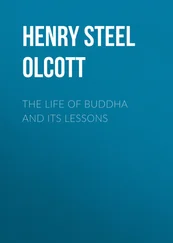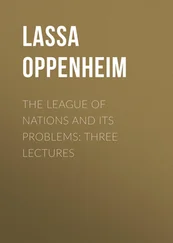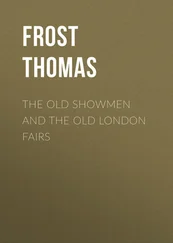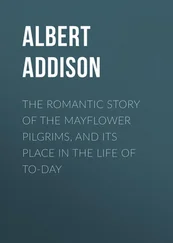William Bryan - The Old World and Its Ways
Здесь есть возможность читать онлайн «William Bryan - The Old World and Its Ways» — ознакомительный отрывок электронной книги совершенно бесплатно, а после прочтения отрывка купить полную версию. В некоторых случаях можно слушать аудио, скачать через торрент в формате fb2 и присутствует краткое содержание. Жанр: foreign_antique, foreign_prose, на английском языке. Описание произведения, (предисловие) а так же отзывы посетителей доступны на портале библиотеки ЛибКат.
- Название:The Old World and Its Ways
- Автор:
- Жанр:
- Год:неизвестен
- ISBN:нет данных
- Рейтинг книги:4 / 5. Голосов: 1
-
Избранное:Добавить в избранное
- Отзывы:
-
Ваша оценка:
- 80
- 1
- 2
- 3
- 4
- 5
The Old World and Its Ways: краткое содержание, описание и аннотация
Предлагаем к чтению аннотацию, описание, краткое содержание или предисловие (зависит от того, что написал сам автор книги «The Old World and Its Ways»). Если вы не нашли необходимую информацию о книге — напишите в комментариях, мы постараемся отыскать её.
The Old World and Its Ways — читать онлайн ознакомительный отрывок
Ниже представлен текст книги, разбитый по страницам. Система сохранения места последней прочитанной страницы, позволяет с удобством читать онлайн бесплатно книгу «The Old World and Its Ways», без необходимости каждый раз заново искать на чём Вы остановились. Поставьте закладку, и сможете в любой момент перейти на страницу, на которой закончили чтение.
Интервал:
Закладка:
At the park I luckily fell in with some of the councilmen whom I had met before and they took me in hand. I saw the procession arrive, heard the banzais (the Japanese cheers) as they rolled along the street, keeping pace with Togo's carriage, and I witnessed the earnest, yet always orderly, rejoicing of the crowd that had congregated at the end of the route. When the procession passed by us into the park the members of the city council fell in behind the carriages, and I with them. When we reached the stand, a seat was tendered me on the front row from which the extraordinary ceremonies attending the reception could be witnessed. Mayor Ozaki, the presiding officer, escorted Admiral Togo to a raised platform, and there the two took seats on little camp stools some ten feet apart, facing each other, with their sides to the audience and to those on the stand. After a moment's delay, a priest, clad in his official robes, approached with cake and a teacup on a tray and, kneeling, placed them before the admiral. Tea was then brought in a long handled pot and poured into the cup. After the distinguished guest had partaken of these refreshments, the mayor arose and read an address of welcome. He has the reputation of being one of the best orators in the empire, and his part was doubly interesting to me. As he confined himself to his manuscript, I could not judge of his delivery, but his voice was pleasing and his manner natural. The address recited the exploits of Admiral Togo and gave expression to the gratitude of the people. At its conclusion the hero-admiral arose and modestly acknowledged the compliment paid to him and to his officers. Admiral Togo is short, even for the Japanese, and has a scanty beard. Neither in stature nor in countenance does he give evidence of the stern courage and indomitable will which have raised him to the pinnacle of fame.
When he sat down the mayor proposed three times three banzais, and they were given with a will by the enormous crowd that stood in the open place before the stand. While writing this article, I am in receipt of information that Mayor Ozaki has secured for me one of the little camp stools above referred to and has had made for me a duplicate of the other. They will not only be interesting souvenirs of an historic occasion, and prized as such, but they will be interesting also because they contrast so sharply with the large and richly upholstered chairs used in America on similar occasions.
From this public meeting the admiral and his officers were conducted to a neighboring hall where an elaborate luncheon was served. With the councilmen I went to this hall and was presented to the admiral and his associates, one of whom had been a student at Annapolis.
By the courtesy of Hon. Lloyd Griscom, the American minister, I had an audience with the emperor, these audiences being arranged through the minister representing the country from which the caller comes. Our minister, to whom I am indebted for much assistance and many kindnesses during my stay at the capital, accompanied me to the palace and instructed me, as they say in the fraternities, "in the secret work of the order." Except where the caller wears a uniform, he is expected to appear in evening dress, although the hour fixed is in the day time. At the outer door stand men in livery, one of whom conducts the callers through long halls, beautifully decorated on ceilings and walls, to a spacious reception room where a halt is made until the summons comes from the emperor's room. The emperor stands in the middle of the receiving room with an interpreter at his side. The caller on reaching the threshold bows; he then advances half way to the emperor, pauses and bows again; he then proceeds and bows a third time as he takes the extended hand of the sovereign.
The conversation is brief and formal, consisting of answers to the questions asked by his majesty. The emperor is fifty-three years old, about five feet six inches in height, well built and wears a beard, although, as is the case with most Japanese, the growth is not heavy. On retiring the caller repeats the three bows.
We were shown through the palace, and having seen the old palace at Kyoto, which was the capital until the date of the restoration (1868), I was struck with the difference. The former was severely plain; the latter represents the best that Japanese art can produce.
No discussion of Japanese customs would be complete without mention of the tea ceremonial. One meets tea on his arrival; it is his constant companion during his stay and it is mingled with the farewells that speed him on his departure. Whenever he enters a house he is offered tea and cake and they are never refused. This custom prevails in the larger stores and is scrupulously observed at public buildings and colleges. The tea is served in dainty cups and taken without sugar or cream. The tea drinking habit is universal here, the kettle of hot water sitting on the coals in the brazier most of the time. At each railroad station the boys sing out, "Cha! Cha!" (the Japanese word for tea) and for less than two cents in our money they will furnish the traveler with an earthen pot of hot tea, with pot and cup thrown in.
The use of tea at social gatherings dates back at least six hundred years, when a tea ceremonial was instituted by a Buddhist priest to soften the manners of the warriors. It partook of a religious character at first, but soon became a social form, and different schools of tea drinkers vied with each other in suggesting rules and methods of procedure. About three hundred years ago Hideyoshi, one of the greatest of the military rulers of Japan, gave what is described as the largest tea party on record; the invitations being in the form of an imperial edict. All lovers of tea were summoned to assemble at a given date in a pine grove near Kyoto, and they seem to have done so. The tea party lasted ten days and the emperor drank at every booth.
According to Chamberlain, tea drinking had reached the luxurious stage before the middle of the fourteenth century. The lords took part in the daily gatherings, reclining on tiger skins, the walls of the guest chamber being richly ornamented. One of the popular games of that day was the offering of a number of varieties of tea, the guests being required to guess where each variety was produced, the best guess winning a handsome prize. The tea ceremony answered at least one useful purpose – it furnished an innocent way of killing time, and the lords of that day seem to have had an abundance of time on their hands. The daughters of the upper classes were trained to perform the ceremony and displayed much skill therein. Even to this day it is regarded as one of the accomplishments, and young ladies perfect themselves in it, much as our daughters learn music and singing. At Kagoshima, Governor Chikami, one of the most scholarly men whom I have met here, had his daughter perform for my instruction a part of the ceremony, time not permitting more. With charming grace she prepared, poured and served this Japanese nectar, each motion being according to the rules of the most approved sect, for there are sects among tea drinkers.
The theatre is an ancient institution here, although until recently the actors were considered beneath even the mercantile class. Their social standing has been somewhat improved since the advent of western ideas. The theatre building is very plain as compared with ours or even with the better class of homes here. They are always on the ground floor and have a circular, revolving stage within the larger stage which makes it possible to change the scenes instantly.
The plays are divided into two kinds – historical ones reproducing old Japan, and modern plays. The performance often lasts through the entire day and evening, some of the audience bringing their tea kettles and food. Lunches, fruit, cigarettes and tea are also on sale in the theatre. The people sit on the floor as they do in their homes and at public meetings. One of the side aisles is raised to the level of the stage and the actors use it for entrance and exit.
Читать дальшеИнтервал:
Закладка:
Похожие книги на «The Old World and Its Ways»
Представляем Вашему вниманию похожие книги на «The Old World and Its Ways» списком для выбора. Мы отобрали схожую по названию и смыслу литературу в надежде предоставить читателям больше вариантов отыскать новые, интересные, ещё непрочитанные произведения.
Обсуждение, отзывы о книге «The Old World and Its Ways» и просто собственные мнения читателей. Оставьте ваши комментарии, напишите, что Вы думаете о произведении, его смысле или главных героях. Укажите что конкретно понравилось, а что нет, и почему Вы так считаете.












